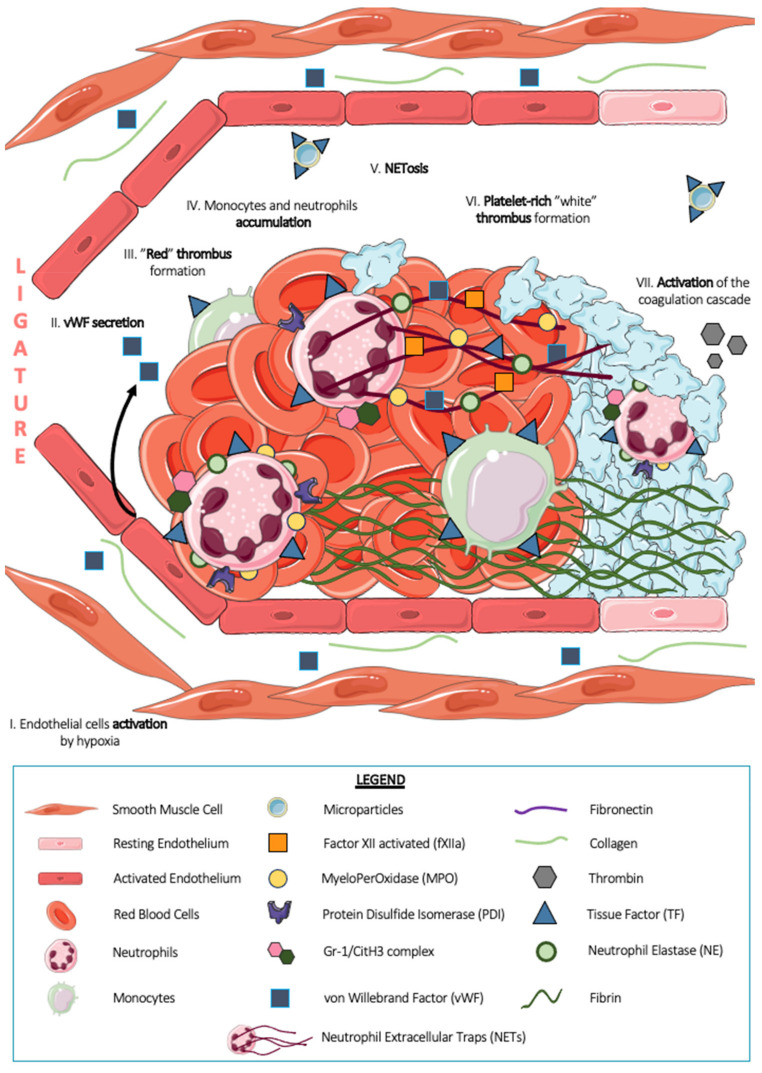Figure 5.
Thrombus formation after a ligature of the inferior vena cava (DVT model). Following a 90% flow restriction with a ligature of the inferior vena cava (IVC) in mice, the induced stenosis causes turbulences in blood flow and hypoxia of the cells, which together lead to local activation of the endothelium (I). This activation induces the release of von Willebrand factor initially contained in the Weibel–Palade bodies of endothelial cells (II). This pattern leads initially to the formation of a so-called “red” thrombus rich in erythrocytes (III). In this part of the thrombus, immune cells such as neutrophils and monocytes, as a majority, accumulate (IV).

